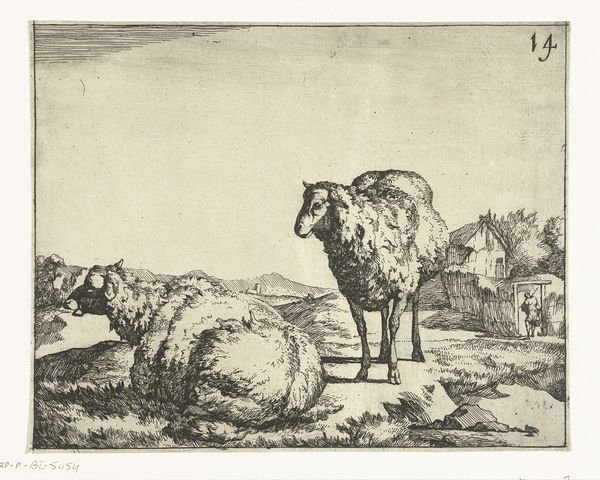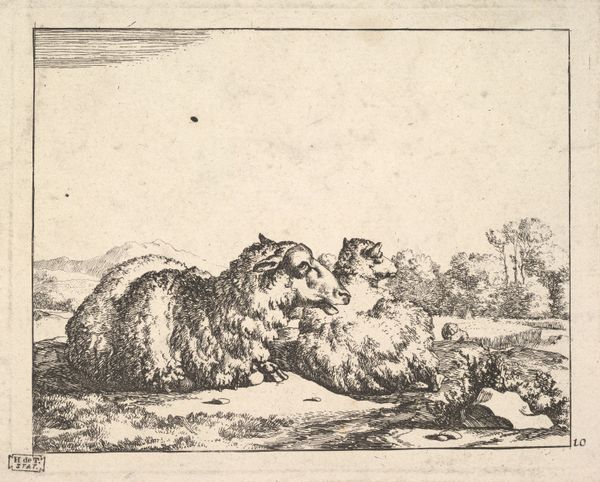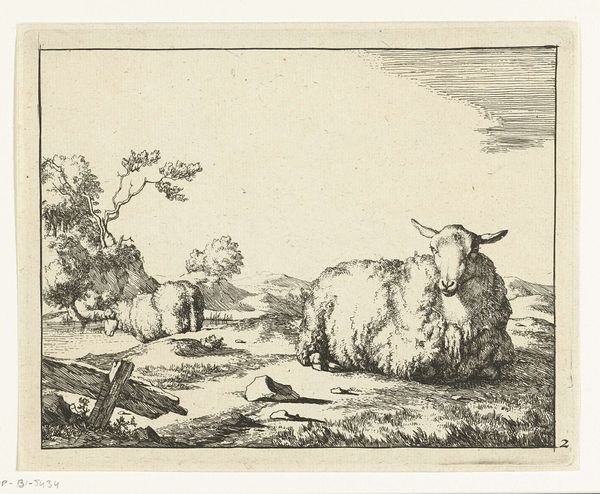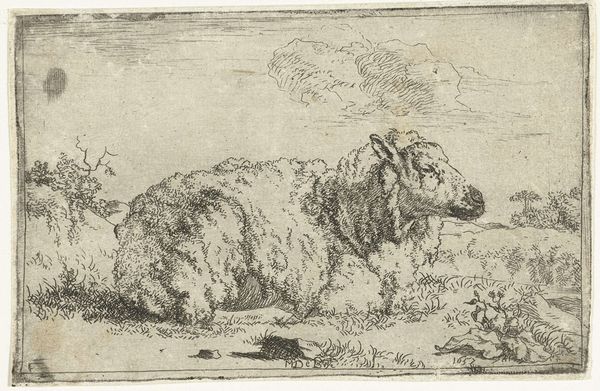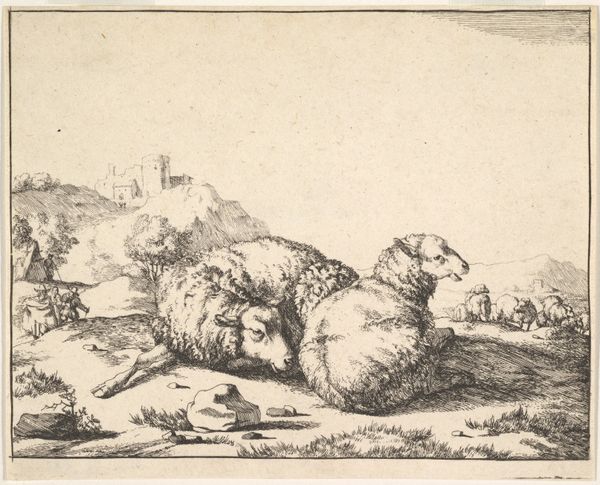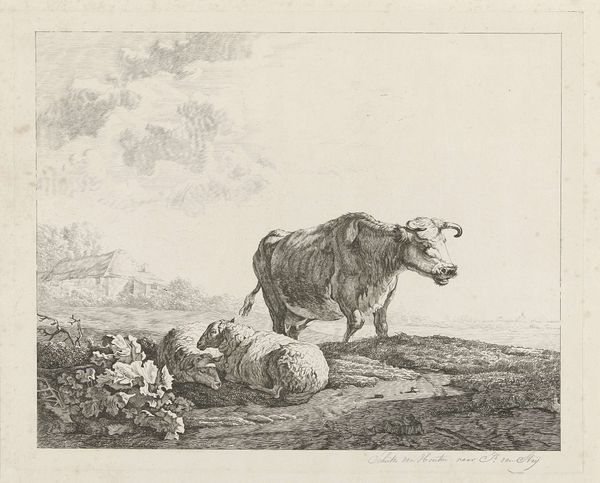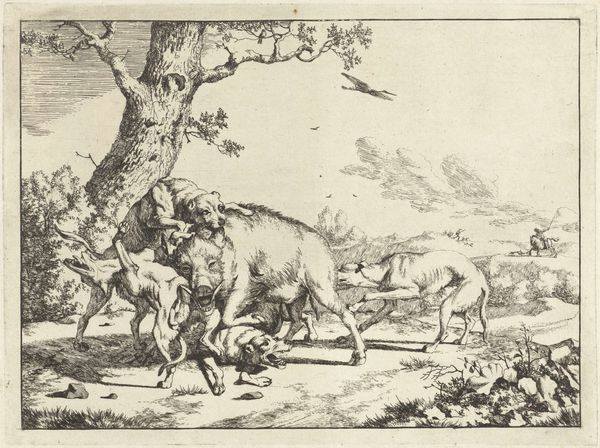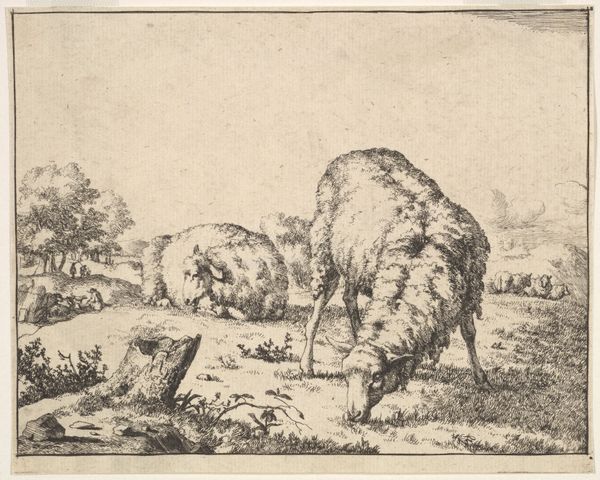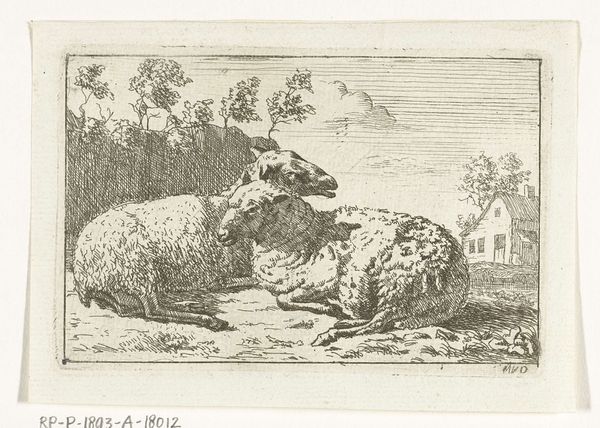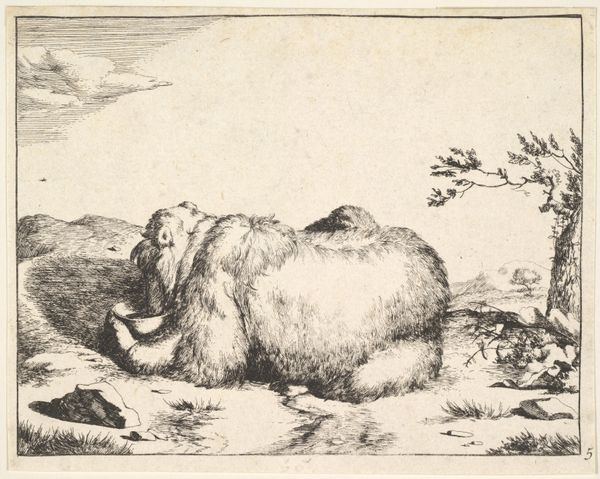
#
landscape illustration sketch
#
comic strip sketch
#
mechanical pen drawing
#
pen illustration
#
pen sketch
#
old engraving style
#
personal sketchbook
#
pen-ink sketch
#
sketchbook drawing
#
storyboard and sketchbook work
Dimensions: height 116 mm, width 149 mm
Copyright: Rijks Museum: Open Domain
Editor: So this is "Liggende ram, en profil," or "Lying Ram, in Profile," by Marcus de Bye, made in 1664. It’s an ink drawing, and it feels like a study – a single ram is drawn in careful detail. What do you see in this piece? Curator: This image, to me, speaks to the relationship between humans and the natural world during the Dutch Golden Age. It depicts not just a ram, but a societal attitude towards land use, agriculture, and animal husbandry. How might viewing this artwork through a lens of environmental history shift our understanding? Editor: Environmental history? How so? Curator: Think about the context: The Dutch Republic was expanding economically, including transforming landscapes for farming. This seemingly simple depiction of a ram could represent the commodification of animals and the land they occupy. Consider also that animal depictions often symbolized social classes. Does this portrayal idealize rural life or perhaps hint at the economic structures underlying it? Editor: I hadn't thought of it that way. It felt more like just a nice drawing of a farm animal. So, you're saying de Bye might be making a statement about economic forces in his society through his artistic rendering? Curator: Potentially. Or documenting the changing cultural landscape through the common, and in this period quite precious, sight of domesticated animals. Can an image, seemingly innocuous, be inherently political? What kind of ideology gets reinforced simply by illustrating aspects of daily life? Editor: It's interesting to consider that something as simple as a drawing of a ram could reflect broader issues. I guess I see how even everyday art has meaning in terms of history, class and environment. Curator: Precisely. Art serves not only as a record but as a dialogue with its time, allowing us to look closer to learn more about that society and how it may relate to issues we are experiencing today.
Comments
No comments
Be the first to comment and join the conversation on the ultimate creative platform.



